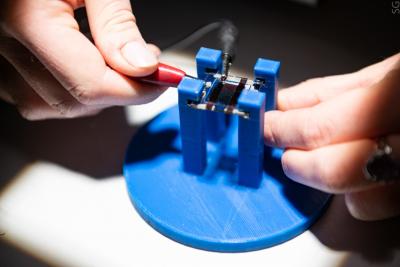A research team at NUST MISIS and the University of Tor Vergata recently presented an improved structure of perovskite solar cells. The scientists modified perovskite-based solar cells using MXenes ' thin two-dimensional titanium carbides with high electrical conductivity. The MXenes-based modified cells reportedly showed superior performance, with power conversion efficiency exceeding 19% (the reference demonstrated 17%) and improved stabilized power output with respect to reference devices.

'In this work, we demonstrate a useful role of MXenes doping both for the photoactive layer (perovskite) and for the electron transport layer (fullerenes) in the structure of solar cells based on nickel oxide,' said the co-author of the paper, a researcher from the NUST MISIS Laboratory for Advanced Solar Energy, post-graduate student Anastasia Yakusheva. 'On the one hand, the addition of MXenes helps to align the energy levels at the perovskite/fullerene interface, and, on the other hand, it helps to control the concentration of defects in the thin-film device, and improves the collection of photocurrent.'